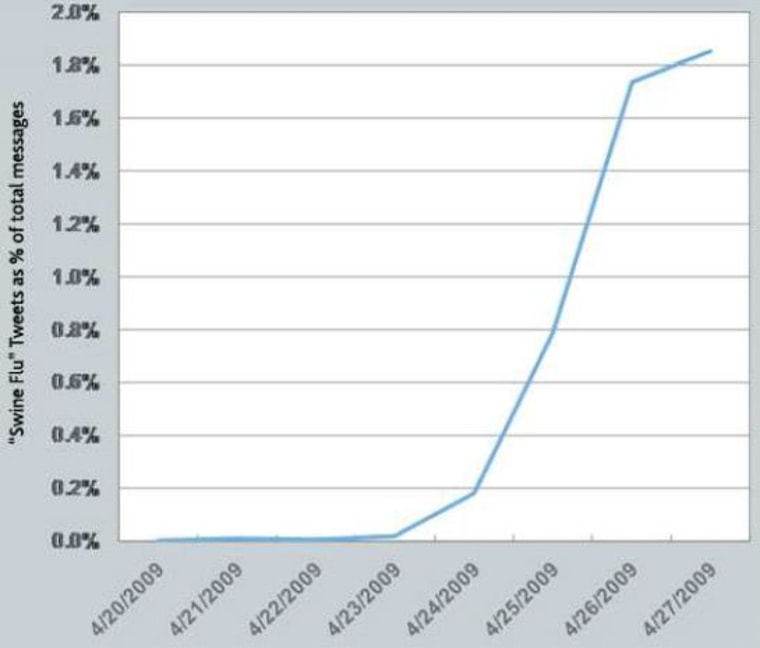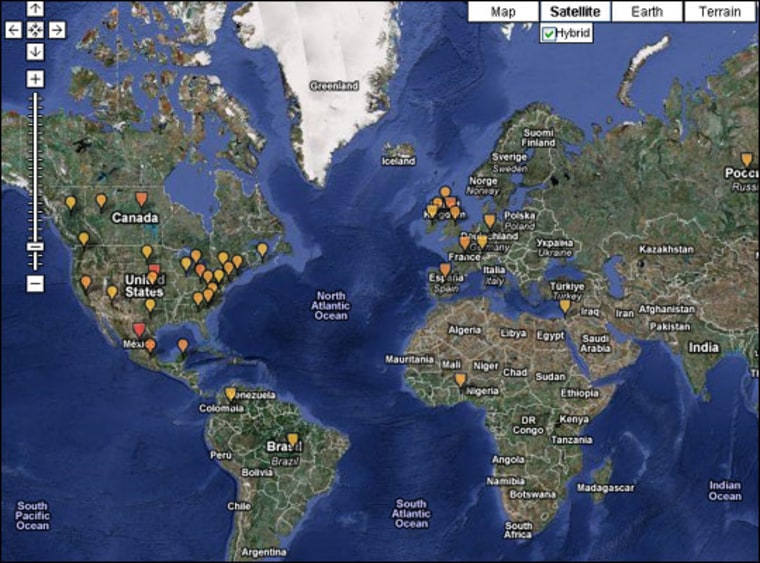Powerful disease-tracking tools, including those currently monitoring the spread of swine flu across the world, were once reserved for officials at the Centers for Disease Control and the World Health Organization. No longer.
Today, anyone can see the spread of diseases such as swine flu in real time, and alert public health officials to potential new cases by using Google, and now, Twitter.
"Our site used to update every hour," said John Brownstein, a physician at Children's Hospital Boston who, along with fellow CHB computer scientist Clark Friefeld, created the HealthMap swine flu tracking service, which was recently modified to include Twitter updates. "But that was too slow for the amount of information we've been accumulating, so we had to switch to a Twitter feed instead."
The new swine flu Twitter service launched Sunday morning with about 50 users. By Monday afternoon, more than 1,400 people had signed up to receive the latest swine flu news.
Swine flu is big news on the social networking site. On Monday, the top three trend searches ("Swine flu," #swineflu, and "CDC,") were related to the virus.

Some of the "tweets," as the 140-character-or-less messages are called, are serious, noting emerging hotspots or asking fellow Twitterers whether the virus has reached a given community.
Other tweets are more snark than science. "Maybe my computer has this swine flu thing?" said user Ifoch. Many express dismay at histrionic media coverage of the potential for a pandemic when casualties still number in the hundreds.
The popularity of swine flu on Twitter presents both a boon and burden for the Brownstein and Freiland. The more people who use the site, the sooner an outbreak can be reported, and the sooner public health officials can work to contain it.
The downside is that so much information can lead to false positives and install public fear. HealthMap uses blogs and Twitter messages sparingly, relying more on official news reports to update with the latest, high-quality information on disease outbreaks.
The system isn't entirely automated, however. Users can report new cases of swine flu as well. It's not as easy as tweeting "I have swine flu!" but it's close.
If a registered HealthMap user finds out about an unreported case of swine flu, or another disease, on the Web, the user can paste the URL into HealthMap. HealthMap scans the information, and if the algorithm determines the report is credible, the information is added to the map. The user who identified the new case is credited as a "Disease Detective."
The HealthMap Twitter feed is helping public health officials sort though the data about the swine flu crisis.
"Many of us feel like we are drowning in information," said Larry Madoff, editor of the ProMED list-serve of the International Society for Infectious Diseases. Madoff receives HealthMap's Twitter feed, along with pages-long summaries from the CDC, WHO, and other public health organizations multiple times a day.
"On the other hand, you can get a tweet that says 'swine flu confirmed in Spain,' and that's really what you need to know," he added.
For the general public, information overload can quickly turn into public hysteria.
Some tweets are downright scary. "I'm concerned about the swine flu outbreak in us and mexico could it be germ warfare?" asked page_1215. There is no evidence that swine flu is any kind of bioweapon, but instant updates from public health officials from HealthMap or from the CDC's own Twitter account, CDCemergency, could help calm the public's fear over swine flu.
"We don't want to be alarmists," said Brownstein. "People are using our service for informational purposes, and that's wonderful."
